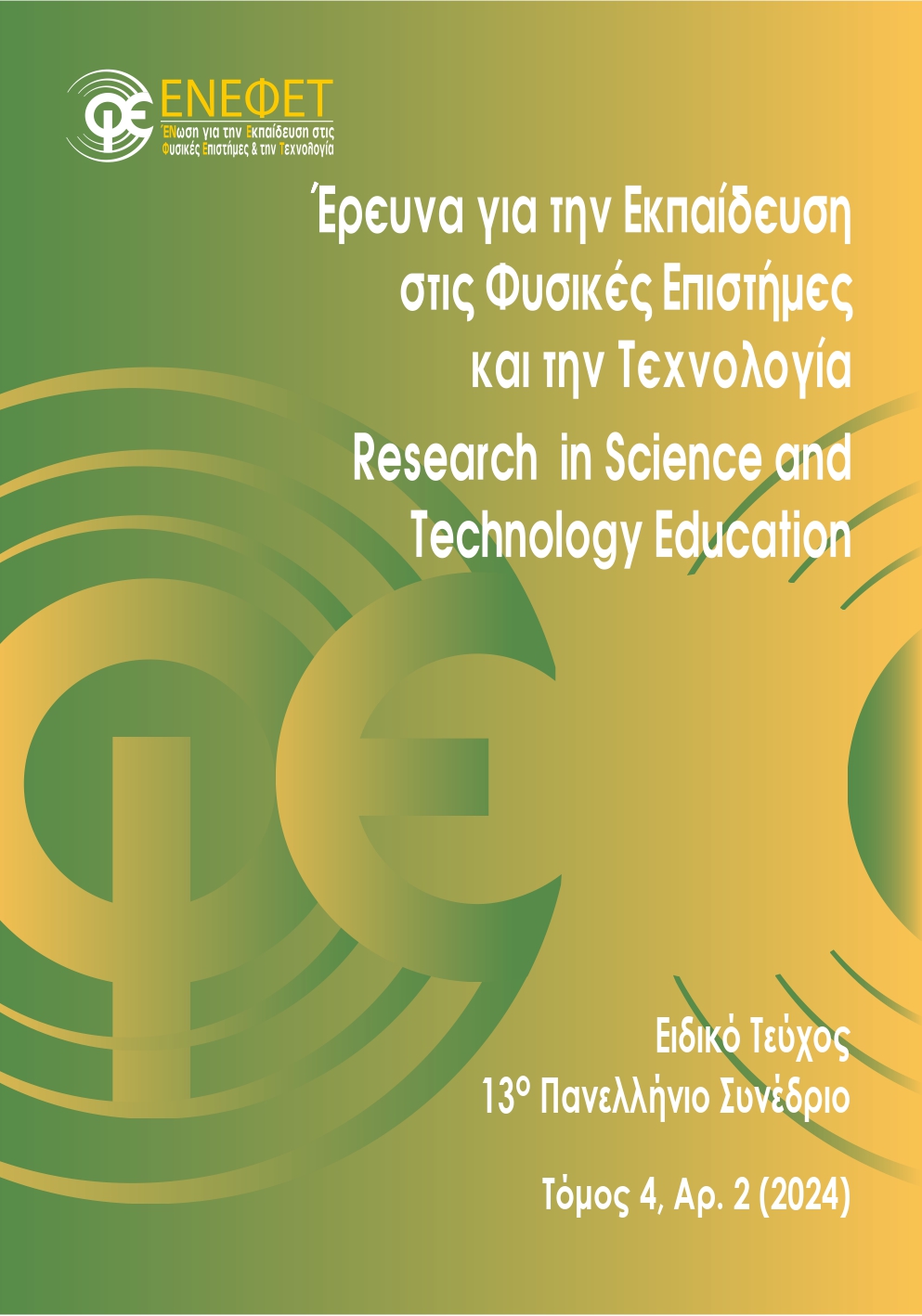Ελληνική Απόδοση του Ερωτηματολογίου TOSRA για τη Μελέτη των Στάσεων Μαθητών/τριών Λυκείου Απέναντι στις Φυσικές Επιστήμες
Abstract
Οι θετικές στάσεις προς τις Φυσικές Επιστήμες έχουν σημαντική εκπαιδευτική αξία. Στη μελέτη αυτή παρουσιάζεται η ελληνική απόδοση και ανάλυση πέντε κλιμάκων του ερωτηματολογίου TOSRA σε 662 μαθητές/τριες Α’ και Β’ Λυκείου. Η δομή του TOSRA επιβεβαιώθηκε με διερευνητική και επιβεβαιωτική παραγοντική ανάλυση, διαπιστώνοντας την καλή προσαρμογή της ελληνικής απόδοσης του ερωτηματολογίου στη θεωρητική δομή του Fraser. Οι μαθητές/τριες εμφάνισαν υψηλότερη αποδοχή στις κλίμακες της επιστημονικής διερεύνησης και της απόλαυσης των πειραματικών δραστηριοτήτων Φυσικής, ενώ η κλίμακα του μελλοντικού επαγγελματικού ενδιαφέροντος προσανατολισμένο στην επιστήμη είχε τη χαμηλότερη αποδοχή. Επίσης, καταγράφηκε στατιστικά σημαντική διαφορά ανάλογα με το φύλο, με τα αγόρια να εμφανίζουν υψηλότερες στάσεις απέναντι στην επιστήμη έναντι των κοριτσιών σχετικά με το ενδιαφέρον ενασχόλησης τους με την επιστήμη στον ελεύθερο χρόνο. Τα ευρήματα μπορούν να αξιοποιηθούν στο σχεδιασμό και στην αξιολόγηση διδακτικών παρεμβάσεων που στοχεύουν στην ενίσχυση θετικών στάσεων των μαθητών προς τις Φυσικές Επιστήμες.
Article Details
- How to Cite
-
Gkagkas, V., & Χατζηκρανιώτης Ε. (2024). Ελληνική Απόδοση του Ερωτηματολογίου TOSRA για τη Μελέτη των Στάσεων Μαθητών/τριών Λυκείου Απέναντι στις Φυσικές Επιστήμες. Research in Science & Technology Education, 4(2), 15–50. https://doi.org/10.12681/riste.37367
- Section
- Research Article
Authors retain copyright and grant the journal right of first publication with the work simultaneously licensed under a CC-BY-NC-SA that allows others to share the work with an acknowledgement of the work's authorship and initial publication in this journal.



